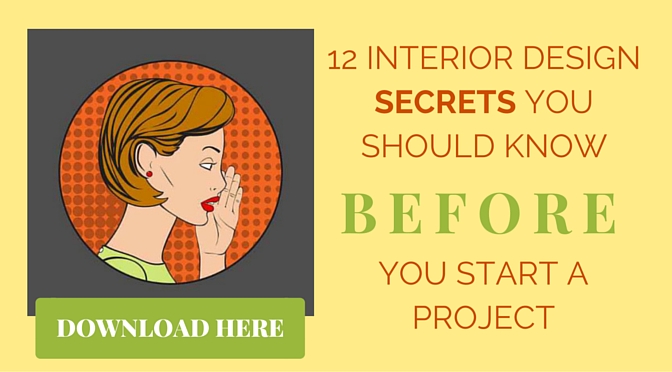2016…How to Make THIS the Year!!
Here it is, another year gone by and once again, nothing’s changed.
Where did it go? What happened to that project you swore you would get done?
Whether it’s one room or more, home projects tend to look huge. There’s the decision on what changes to make… the research to see how you want it to look…the calculations of how much investment is needed…where to shop for the best value…and so on.
All this is whirling around in your head before one item of furniture is moved, one rug pulled up, or one nail gets hammered.
If the “I don’t know where to start” paralysis is holding you back, it’s time for another approach. One that will get you started without fear. It will help you determine what you want…how you want it to look…and create a clear path to follow to completion.
All it takes is a consultation.
Whether it’s a matter of getting started or your part way through and it’s not working, take some time with a professional designer to overcome the hurdle that’s holding you back.
Here’s how it works…
Consultations Come in Many Forms
There are a number of reasons people call me for a consultation:
- They want to make a change but have no idea what they want, or where to start.
- They know what they want — but don’t know how to put it together…or…are unsure how to budget for it.
- Everything’s in place but it’s not coming together as planned.
- The project’s done – but the end result doesn’t match their vision.
Customize Your Consultation
Let’s start with the first group – the ones who want or need a change and don’t know where to start.
This kind of consultation is mostly a question and answer session. Here I ask what they want to change and why. What are they trying to accomplish? Through our discussion, I’m able to determine the motivation and the objective(s) they’re aiming for.
For example: they don’t like their kitchen. We explore what they don’t like.
– Is it appearance?
– Is it hard to do certain tasks?
– Is it hard to get around?
Next we talk about what would make it better.
– If it’s appearance, what aspects would they like to change?
– If it’s difficult to prepare meals, what would make meal preparation easier?
– Do they need more space for more than one person working in it?
Finally, we talk about their vision and how they imagine the end result.
By talking things through, I’m able to help them construct exactly what they want. Sometimes they don’t even realize they’re the ones doing it. (One of the most fun aspects of my job is helping clients discover their own creativity.)
Where we go from here is up to them. Some do the rest on their own, others hire me to take them through it.
How about those who know what they want, but don’t know how to put it together?
Continuing with our kitchen example…
Often this starts with a picture in HOUZZ, Pinterest, or a photo in another magazine. Maybe they know what design style they want, like Contemporary, Rustic, Arts & Crafts, etc.
They start with one thing, but it doesn’t work with something else…
Like wall colors. In the picture, they see a color they love, like sky blue. However, the sample brought back to the house doesn’t look right. Now the cabinets look faded, stick out too much, or just plain clash.
Most people don’t understand how complex color is, so I do a color consultation. (Recently I did this for the city of Mesa along Main Street.)
Another issue might be a dining set that looks perfect for the alcove. Only problem is — it’s too big.
Here we look at spacing…not only what looks good…but what constitutes safe passage. You’d be amazed at the difference a couple of inches can make. Usually, spacing involves more than just one piece of furniture, cabinet, or accessory.
Once one aspect is right, it’s important to make sure it doesn’t upset the balance somewhere else.
Or, they know what they want, but don’t know how to budget for it.
This is especially true with kitchens…
My experience is most homeowners do not realize the TRUE cost of their project. It’s hard to account for everything needed to create the desired look. Things like under-cabinet lighting and organizers are just a few of the touches that complete the overall effect.
I see many ads boasting low priced re-model jobs. It’s frustrating because that old adage “you get what you pay for” really hits home here (pun intended).
Too often, they take short cuts to keep the pricing low. As you saw above, even a couple of inches, or the wrong appliances, can throw off the balance of an entire room.
Speaking of appliances, I’ve already researched the range of costs. When clients tell me what they want – I look at my list and give them three levels of pricing: budget, mid-range, and up-graded options.
I construct a grid so they can see the difference. It’s fairly typical for everyone to want up-graded appliances…that is…until they see how it adds up.
The beauty of seeing all three together is to figure out where they can trim costs without sacrificing style.
Now they know up front what the real cost will be and have a sense of control. This education is empowering, and, it propels the project to completion.
Finally, the project’s not going as anticipated, or it’s done but something’s off.
The reason why professionally engineered projects look so good is every detail is planned. More than color and matching decor, good design includes attention to shape, textures, focal points, and more. It’s so subtle, most don’t see it, but it adds to the polished look you want so much.
In this case I give clients alternatives they didn’t know to look for. It could be something as simple as rearranging the items they already have, maybe ‘de-cluttering’ a little (it’s not unusual to try to fit too much in to match a photo), or a different shade of a color.
Some of my friends think I’m an artist, but it’s more about training. When you know what to look for, it’s easy to see why something doesn’t work, and what it takes to fix it.
Getting to the end of a project without achieving it as envisioned is disheartening. It’s why I have a number of free resources on my web-site for your convenience. I think you’ll find my “12 Design Secrets You Should Know BEFORE You Start A Project” especially valuable.
No matter what phase of the project you’re in, this resource guide will help you ask the right questions to get started, and navigate a clear path to the change you’ve been wanting to make.
If you need a little assistance, or want to verify your ideas, call me at 480-695-1360 or email me at [email protected] and let me know how I can help. A small investment now saves many hours of frustration, time lost, and eases the transition from old to new.
Even more important, it makes 2016 the year of getting it done.


